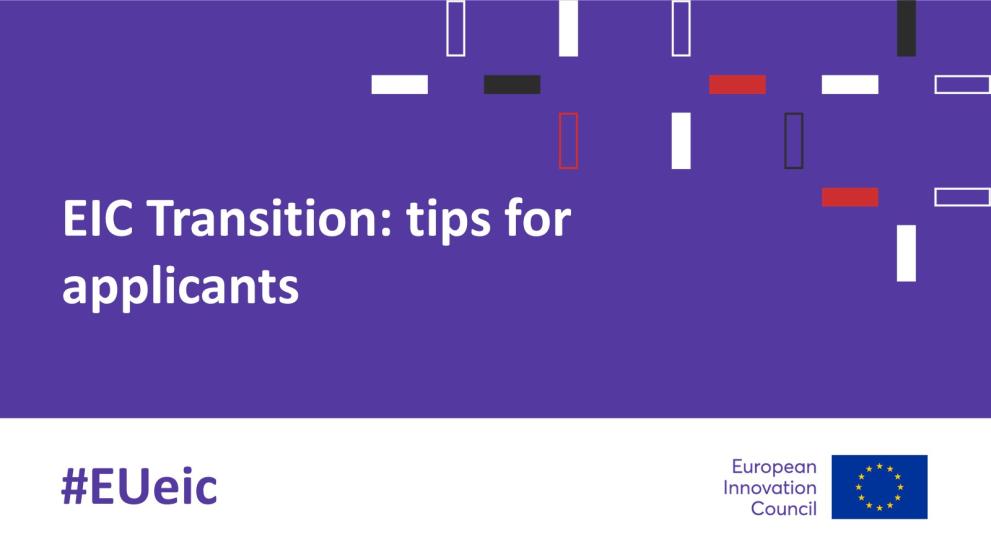
If you are part of a deep-tech SME or start-up and would like to apply for the EIC Transition, you can only do so based on an innovation coming from an eligible project. More precisely, your proposal must build on results (demonstrated proof of principle with minimum Technology Readines Level 3 and max TRL 4) from an eligible project. But you do not need to be a participant, Principle Investigator or result owner of the previous projects; on the contrary, new participants are welcome and encouraged to apply! For this, you need to get informed, connected and involved.
Get informed
The EIC publishes the list of eligible projects for the open scheme (see EIC Transition call page for details on eligible projects) but, unless you were part of such a project or you knew about a certain innovation already, it is not always straightforward and easy to identify an innovation and its innovator. Aside reaching out to your NCP, EEN member or the Access2EIC network for support, a number of other tools are available to identify the innovation and innovators.
To identify those innovations, you can consult the following tools:
For the Transition Open scheme
- Innovation radar – check the EIC Transition page that was created resulting in the innovation discovery tool specifically for EIC Pathfinder/FET innovations. The use of the tool should be self-explanatory and includes a “Tips for using this tool” section.
- ERC Research Information System (ERIS) - for ERC Proof of Concept innovations. To use the tool, login and go to “portfolio analysis”, “explore clusters” and search on “PoC” in the left top search engine. Or consult the project database
For the Transition Challenges scheme
- CORDIS database - containing all project results of EU funded Horizon 2020 and Horizon Europe projects
- Innovation Radar - the innovation discovery tool for project results of EU funded Horizon 2020 and Horizon Europe projects having used the Innovation Radar during project reviews
- Horizon Results Platform where projects publish their key exploitable results and innovations
- ERC Research Information System (ERIS) - to use the tool, login and go to “portfolio analysis”, “explore clusters” or consult the project database
Once you found a possible interesting innovation, first of all you need to make sure it is from an eligible project. The specific innovation radar EIC Transition page shows only eligible projects and related innovations in principle and can be cross-checked against the published list. When searching in CORDIS, ERIS or the Innovation Radar database, you need to double check and verify it is from a funding scheme that is eligible. Timing is also important, as there are specific conditions for start and end dates of eligible projects aside the funding schemes. Check the EIC work programme 2023 for details.
Get connected
Once you believe the identified innovation fits the Transition scheme, you should reach out to the owner(s) of the result and innovation and/or members of the consortia, depending who owns the intellectual property rights. Explore if there is an alignment of interest and potential for collaboration. Explore if there are already intentions to further develop the innovation and/or see if you can play a key role in bringing the innovation to the market. You can also contact your NCP (National Contact Point) to get further support and assistance.
Get involved
Try to make a deal and reach an agreement. Assess if you apply as a mono-beneficiary or if you better go for a possible consortia with others. In any case, once you have reached the point to start writing a proposal, you have to make sure that you include a commitment letter from the relevant owner(s) of the result(s). The letter should confirm the commitment of the owner of the linked project research result to negotiate with you fair, reasonable and non-discriminatory access to such results, including IPR, for the purpose of future commercial exploitation.
Good luck!
Details
- Publication date
- 31 March 2023